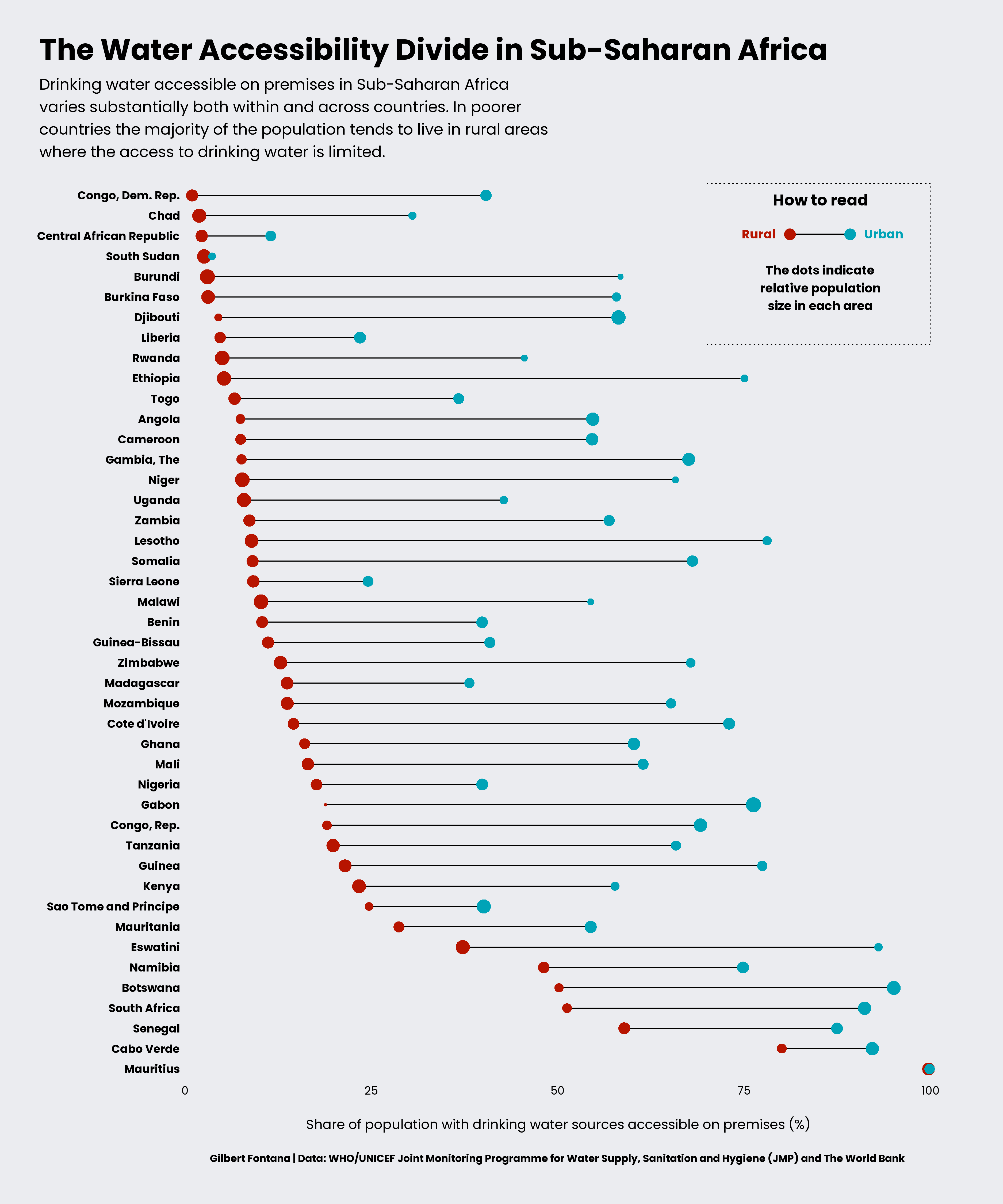
Visualizing the Water Accessibility Divide in Sub-Saharan Africa
According to the United Nations, having access to safe drinking water is a universal human right.
Yet, in Sub-Saharan Africa, only 39% of the population has water connected to their homes—and in the region’s rural areas, this figure drops to just 19%.
This graphic by Gilbert Fontana uses data from the United Nations to compare water accessibility in different countries across Sub-Saharan Africa. The data specifically looks at water on-premises, which is defined as water that’s connected to a person’s dwelling.
 What is groundwater, why is it critical for life on Earth, and what do we need to do to protect it?
What is groundwater, why is it critical for life on Earth, and what do we need to do to protect it?
The Water Accessibility Gap
In Sub-Saharan Africa, water accessibility varies greatly both within and across countries.
For example, Ethiopia has one of the widest gaps within a single country—while 75% of its urban population has access to on-premises water, only 5% of its rural population has water piped to their homes.
While it is one of the most populated countries in Africa, with more than 115 million people as of 2020, Ethiopia is also one of the poorest. It has a national income per capita of only $890, and about 20% of Ethiopia’s population lives in rural areas of the country, leaving about 4.5 million people without access to on-premises water.
Here’s a breakdown of water access in other countries across Sub-Saharan Africa:
As the table above shows, the rural population in the Democratic Republic of the Congo (DRC) is facing some of the worst water scarcity issues across the region, with less than 1% of its rural population having access to on-premises water.
This is particularly worrisome because the DRC has the most fresh-water resources of any country in Africa.
Yet, due to poor infrastructure and conflict-related damage to facilities, hundreds of thousands of people in the DRC do not have safe running water in their homes.
What’s the Impact on the Population?
Without water connected to their homes, people have no choice but to walk to the nearest water source, to collect and carry it back to their homes.
Often, the burden of collecting water falls onto women and children, which can impact their access to education and opportunities to study.
In Chad, where 2% of the rural population has running water in their homes, female literacy rates sit at 14%. According to data from UNESCO, more than 700,000 children weren’t in school in 2019, and of those children, almost 500,000 were female.













 Mauritius
Mauritius
 Benin
Benin
 Burkina Faso
Burkina Faso

